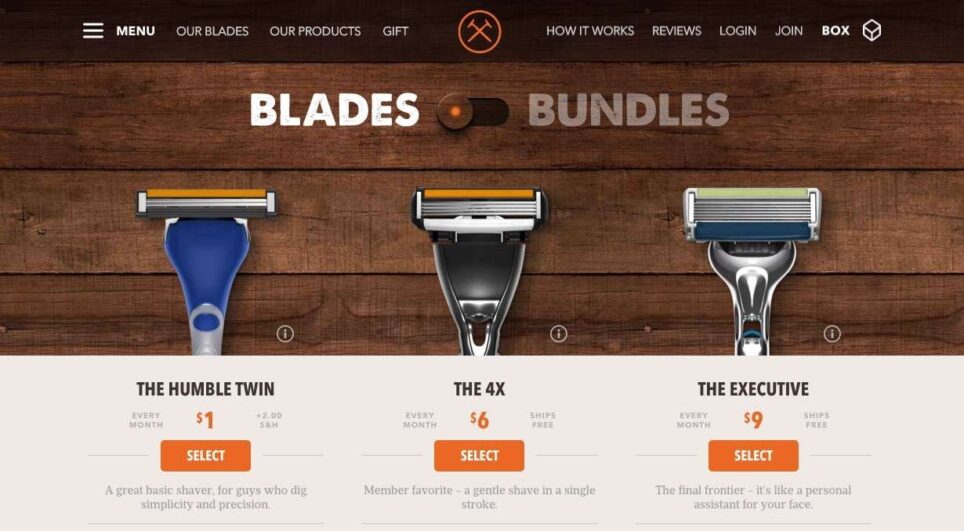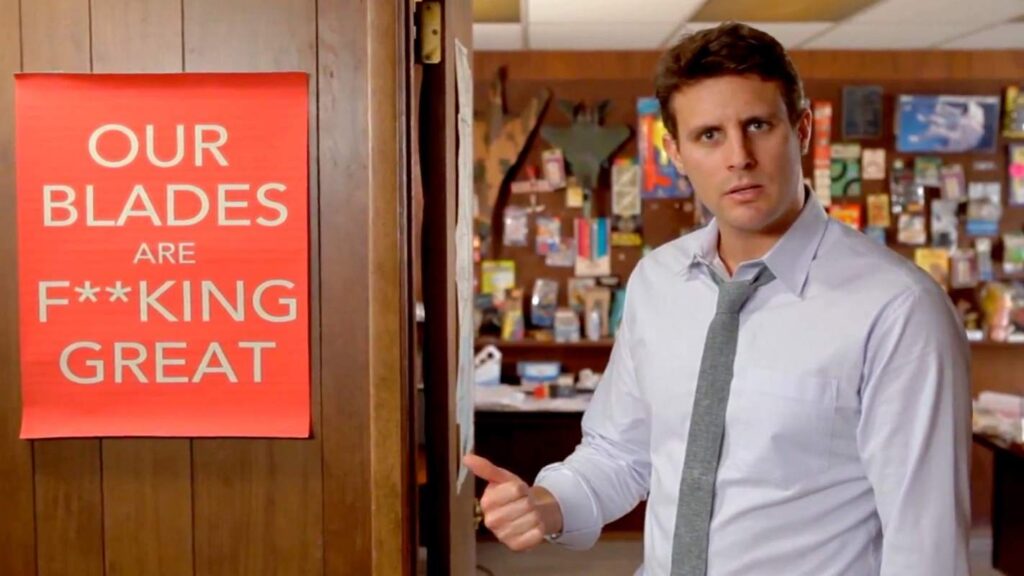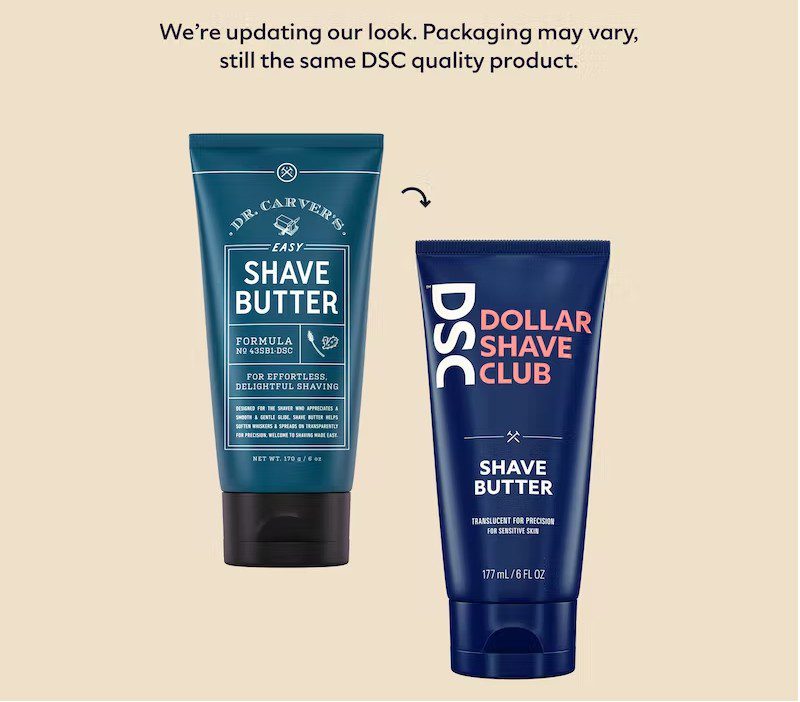How Dollar Shave Club Disrupted an Industry
Published On 16 January, 2023
Dollar Shave Club is an American subscription service that delivers razors and other personal care items directly to customers’ doors. Founded in 2011, the company has become a leader in the industry, offering high-quality products at affordable prices. The company’s mission is to “provide a great shave without breaking the bank.”
Early Success
In its first year alone, DSC acquired over 800,000 subscribers and by 2017 was generating an annual revenue of $200 million. This meteoric success continued over the following years, with 2018 seeing DSC surpassing $400 million in revenues.
So how did Dollar Shave Club disrupt an entire industry? The answer is simple: By cutting out the middleman. For decades, consumers had to buy their razor blades from traditional drug stores and supermarkets, paying high prices for low quality blades. DSC changed that by offering customers high-quality blades at a fraction of the price, without having to leave their homes.
What initially made DSC stand out from its competition? By offering customers the ability to purchase razors at prices significantly lower than retail, coupled with convenient monthly subscription options and timely delivery of products, DSC was able to ease the hassle of running to the store for razor refills each month. The company focused heavily on digital marketing campaigns targeting men aged 18-34 as their primary demographic. With humorous viral YouTube ads featuring CEO Michael Dubin himself, DSC quickly grew its customer base and began disrupting the industry almost overnight.

Subscription Revenue Model
In addition, DSC also introduced a subscription model which allowed customers to pay monthly (or annually) for their razors—making it even more affordable than ever before. This model proved incredibly successful and was quickly adopted by its competitors as well as other companies within the same industry.
The subscription service offers customers a variety of razor blades, body washes, shampoos, shaving creams, and other grooming products. Customers can choose between four different levels of membership: The Humble Twin (two blade), The 4X (four blade), The Executive (six blade) and the Dr. Carver’s Shave Butter (formulated for sensitive skin).
In addition, DSC also offers an array of other grooming products such as beard care and body care kits, as well as their own line of deodorants, soaps and body washes. Their products are all made with natural ingredients and are free from harsh chemicals that could irritate the skin or cause potential allergic reactions. Customers can also try out different scents by signing up for the company’s “Scent Explorers” membership which gives them access to exclusive samples of new products in each shipment.
Furthermore, DSC has recently launched its “Bark” line–a collection specifically designed for men’s dogs featuring shampoos, conditioners and colognes that are formulated without harsh chemicals or fragrances. They also offer a variety of shave accessories like shaving brushes, aftershave balms and pre-shave oils – perfect for those looking for the ultimate grooming experience.

Finally, Dollar Shave Club also has options like their “Shave Butter” subscription, which helps customers save even more money by providing a full set of shave tools, including razors, blades and creams each month at a fraction of what they would typically pay at retail stores. With all these great offerings combined with unbeatable prices and convenient delivery options, it is no wonder why Dollar Shave Club has become one of the most successful disruptors within its industry today.
In addition to its online presence, DSC also invested in physical stores across major cities like Los Angeles, New York City, Dallas and Seattle, where customers could try out new products such as shave creams and face lotions before they bought them online or subscribed to them via monthly boxes. This not only allowed customers to experience their products firsthand but it also helped spread brand awareness even further through word-of-mouth marketing within these local communities.
Innovative Business Model
Dollar Shave Club has built its business model around providing customers with convenience and affordability. Customers pay a flat monthly fee for any bundle they choose or they can opt out of any bundle if necessary. The company then ships the items directly to their homes or offices regularly, so they never have to worry about running out of supplies again.
In terms of pricing strategy and revenue model, Dollar Shave Club charges customers an annual payment (for members enrolled in their annual program) or a monthly recurring payment (for those signed up for their regular subscription). For example, their Executive Razor Starter Kit costs $10 per month plus $2 shipping costs, while the Humble Twin Starter Kit costs $5 per month plus $2 shipping charges. Furthermore, all orders over $20 receive free shipping within the United States, so this provides an incentive for larger purchases or higher value baskets to keep customers loyal.
In addition to its subscription services, Dollar Shave Club offers individual razors, blades and grooming accessories such as shave brushes, travel bags and shower caps online in its members-only store. All products are made with high-quality ingredients derived from natural sources that adhere to strict standards of quality control established by Dollar Shave Club — so customers can be assured they are always getting top-notch products.
Pricing Strategy
Dollar Shave Club’s pricing strategy is based on providing great value to customers while maintaining profitable margins for itself. The company charges a low monthly fee for its subscription services which cover shipping costs and guarantee regular deliveries of fresh product right to customers’ doors. In addition, Dollar Shave Club also offers discounts on bulk orders or when customers subscribe to longer terms, such as 6 or 12 months at a time — saving even more money while still enjoying conveniently delivered shaving supplies and other personal care items every month.
Financial Performance
The company’s revenue model is based on subscription fees from its members and sales from its online store, which sells individual shaving supplies and accessories. According to reports from 2019, Dollar Shave Club had 2 million active subscribers spending an average of about $75 per year — generating total revenues of over $150 million annually at that time.
In terms of overall financial performance from its founding in 2011 until 2022, Dollar Shave Club has seen tremendous growth year-over-year – increasing revenues by nearly 20% annually since 2018 (with 2020 being an even higher growth year). Furthermore, it’s estimated that dollar shave club will reach revenues above 1 billion dollars annually by 2022, along with profits estimated at over 200 million dollars — this would put them well ahead of competitors such as Gillette and Schick, who currently dominate the global razor market in terms of sales volume. In addition, dollar shave club has recently added new product lines, including oral care products, skincare items, and even colognes; this diversification strategy should help them further increase revenue streams over time.
What lesson can be learnt and applied from the Dollar Shave case study?
Identifying a significant customer pain point and an opportunity to deliver incredible value to solve this pain are the basis for a viable business model. Excessive prices for shaver consumables, alongside the hassle factor of having to purchase razor blades regularly, set up conditions for a recurring revue subscription business model.
Once a market beach had been established with razor blades, DSC branched out into complimentary products to drive increased sales per customer and at higher margins as consumers become less price sensitive when purchasing non-core products.
Finally, cut-through marketing and value communication was critical factor in generating early adopters and allowing the business to scale quickly.



